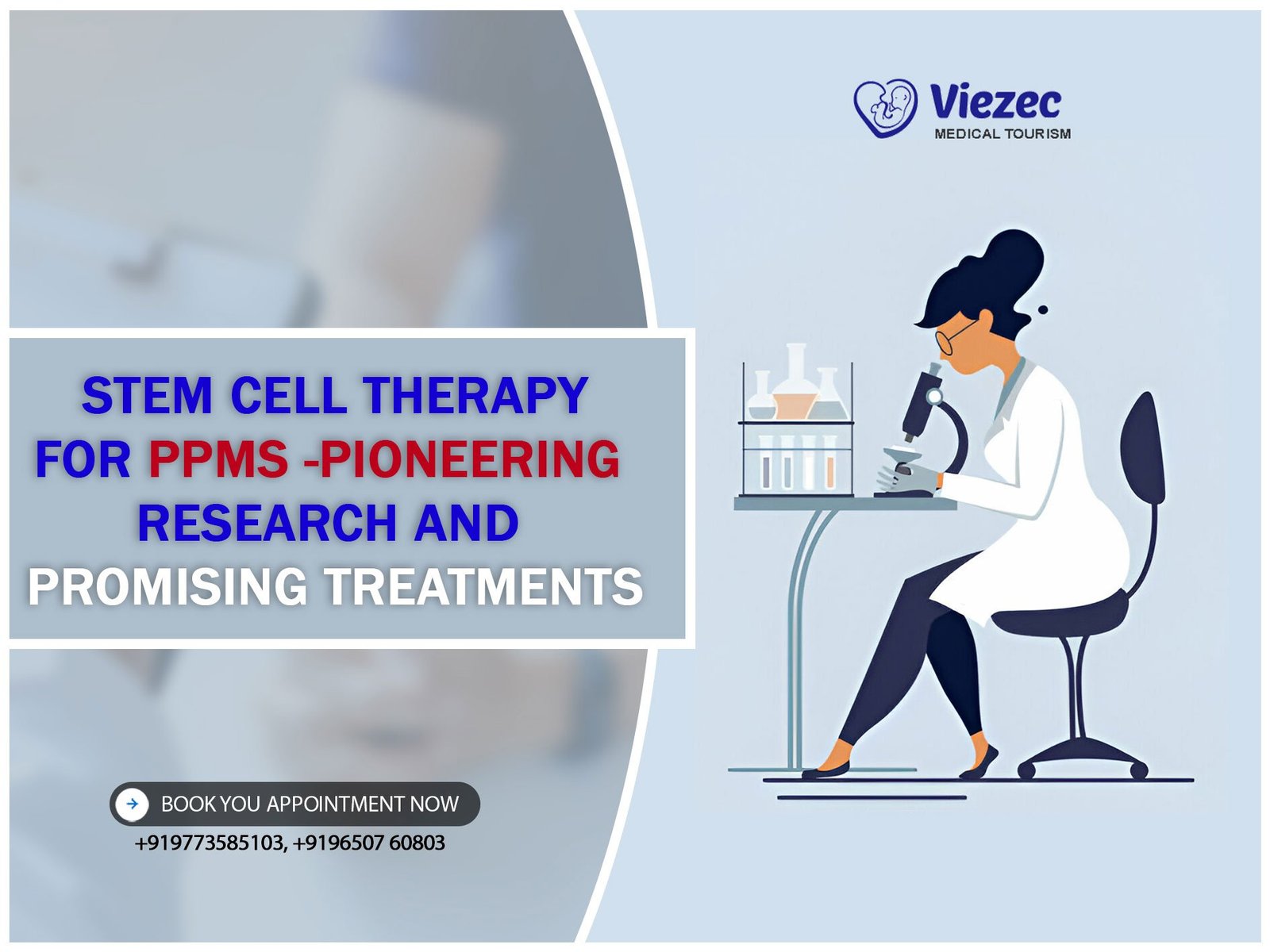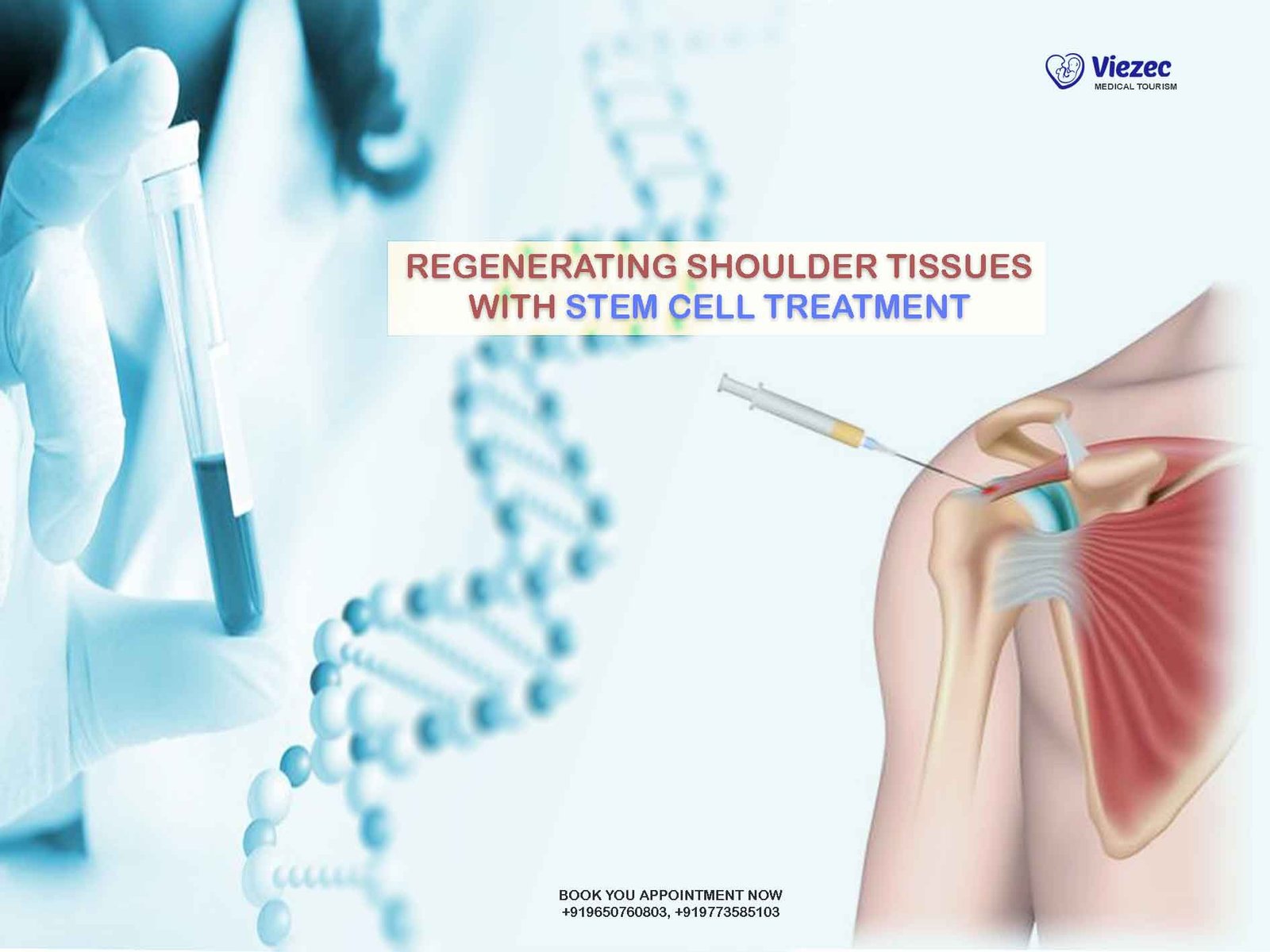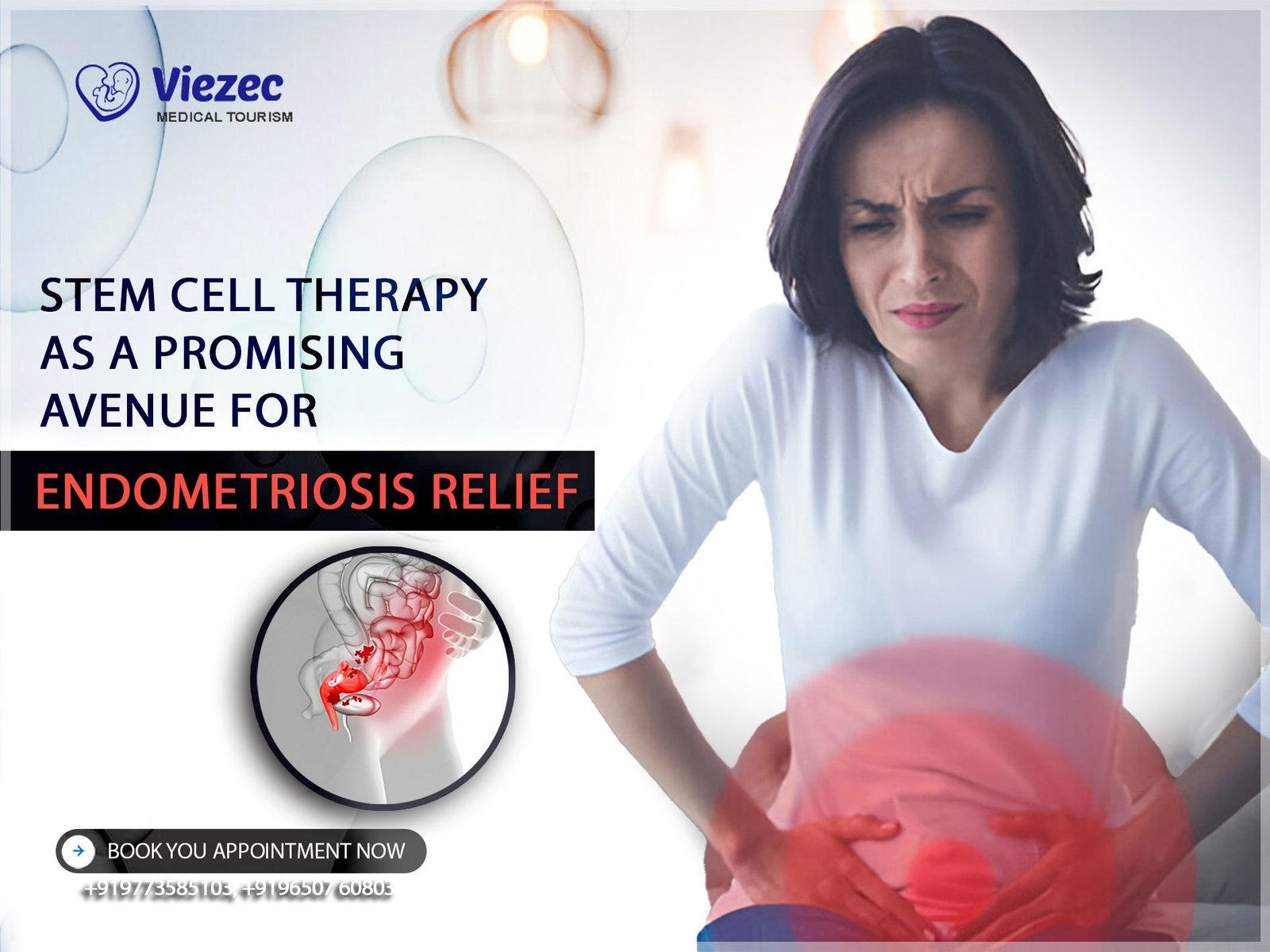Primary Progressive Multiple Sclerosis (PPMS) is a form of multiple sclerosis characterized by a gradual worsening of neurological function over time. Unlike relapsing-remitting MS, PPMS typically does not have distinct periods of remission, leading to progressive disability.
Current Challenges in PPMS Treatment
Treating PPMS poses significant challenges due to its progressive nature and limited efficacy of existing therapies. Conventional treatments focus on symptom management and slowing disease progression but do not offer a cure or halt the degenerative process effectively.
Significance of Stem Cell Therapy in PPMS Management
Stem cell therapy has emerged as a promising approach for PPMS due to its potential to address the underlying mechanisms of neurodegeneration and promote tissue repair. By harnessing the regenerative properties of stem cells, researchers aim to develop novel treatments to modify the course of the disease.
Fundamentals of Stem Cell Therapy
A. What Are Stem Cells and Their Properties?
Stem cells are undifferentiated cells capable of self-renewal and differentiation into various cell types. They possess unique regenerative properties, making them ideal candidates for repairing damaged tissues and restoring function in degenerative diseases like PPMS.
B. Types of Stem Cells Utilized in PPMS Treatment
Several types of stem cells are being investigated for PPMS therapy, including mesenchymal stem cells (MSCs), neural stem cells (NSCs), and induced pluripotent stem cells (iPSCs). Each type has distinct advantages and potential applications in treating neurological disorders.
C. Mechanisms of Action of Stem Cells in PPMS
Stem cells exert their therapeutic effects through multiple mechanisms, including immunomodulation, neuroprotection, and neuroregeneration. By modulating the immune response and promoting tissue repair, stem cell therapy holds promise for slowing disease progression and improving neurological function in PPMS patients.
History and Evolution of Stem Cell Therapy for PPMS
A. Early Discoveries in Stem Cell Research for MS
The exploration of stem cell therapy for MS began with pioneering studies demonstrating the potential of stem cells to repair damaged myelin and restore neurological function in animal models of the disease. These early discoveries laid the foundation for further research into stem cell-based treatments for MS, including PPMS.
B. Milestones in the Development of Stem Cell Therapies for PPMS
Over the years, significant milestones have been achieved in the development of stem cell therapies for PPMS. From preclinical studies demonstrating efficacy in animal models to the translation of these findings into clinical trials, the field has made remarkable progress in advancing stem cell-based treatments for PPMS.
C. Evolution of Clinical Trials and Studies in PPMS Stem Cell Therapy
Clinical trials evaluating the safety and efficacy of stem cell therapy for PPMS have evolved rapidly in recent years. While early trials focused on establishing safety and feasibility, more recent studies have aimed to assess the therapeutic potential of stem cells in slowing disease progression and improving patient outcomes.
Current Research Trends in PPMS Stem Cell Therapy
A. Novel Approaches and Technologies in Stem Cell Research
Recent advances in stem cell research have led to the development of novel approaches and technologies for PPMS therapy. From innovative stem cell delivery methods to the use of gene editing techniques, researchers are exploring new ways to enhance the therapeutic efficacy of stem cell-based treatments for PPMS.
B. Key Findings from Recent Clinical Trials
Recent clinical trials investigating stem cell therapy for PPMS have yielded promising results. While larger, long-term studies are needed to establish the safety and efficacy of these treatments, early findings suggest that stem cell therapy holds great potential for improving outcomes in PPMS patients.
C. Emerging Trends in Stem Cell Transplantation Techniques for PPMS
Advancements in stem cell transplantation techniques have opened up new possibilities for PPMS therapy. From intrathecal injections to intravenous infusions, researchers are exploring different routes of stem cell delivery to optimize treatment outcomes and maximize patient benefits.
Potential Benefits of Stem Cell Therapy in PPMS
A. Disease Modification and Neuroprotection
Stem cell therapy has the potential to modify the underlying disease processes in PPMS by promoting neuroprotection and inhibiting neurodegeneration. By targeting the mechanisms driving disease progression, stem cells may help slow the accumulation of disability and improve long-term outcomes in PPMS patients.
B. Immunomodulation and Suppression of Inflammation
One of the key mechanisms of action of stem cells in PPMS is their ability to modulate the immune response and suppress inflammation. By regulating the activity of immune cells and promoting an anti-inflammatory environment, stem cells may help reduce tissue damage and prevent further neurological deterioration in PPMS.
C. Promotion of Neuroregeneration and Repair Processes
Stem cells have the unique capacity to promote neuroregeneration and repair damaged tissues in the central nervous system. Through the secretion of growth factors and cytokines, stem cells can stimulate endogenous repair mechanisms and facilitate the regeneration of myelin and neuronal connections in PPMS patients.
Patient Selection Criteria for Stem Cell Therapy in PPMS
A. Clinical and Radiological Characteristics
Patient selection for stem cell therapy in PPMS involves careful consideration of clinical and radiological characteristics. Factors such as disease duration, disability level, and lesion burden on MRI may influence eligibility for treatment and predict response to therapy.
B. Disease Progression Assessment
Assessing disease progression is essential for identifying patients who are likely to benefit from stem cell therapy. Longitudinal monitoring of neurological function, imaging studies, and biomarker analysis can help evaluate disease activity and guide treatment decisions in PPMS.
C. Considerations for Optimal Patient Outcomes
Optimizing patient outcomes in PPMS requires a multidisciplinary approach that addresses the complex needs of individual patients. From comprehensive pre-treatment evaluations to personalized treatment plans, tailoring care to each patient’s specific needs is essential for maximizing the benefits of stem cell therapy.
Challenges and Limitations in PPMS Stem Cell Therapy
A. Safety Concerns and Risk Management
Safety concerns remain a significant challenge in stem cell therapy for PPMS. Risks such as infection, tumor formation, and immune reactions must be carefully managed to ensure the safety of patients undergoing stem cell transplantation.
B. Ethical and Regulatory Hurdles
Ethical and regulatory considerations pose challenges to the development and implementation of stem cell therapies for PPMS. Issues such as informed consent, patient privacy, and ethical sourcing of stem cells require careful attention to ensure compliance with regulatory standards and ethical guidelines.
C. Long-Term Efficacy and Sustainability of Treatment Effects
Long-term efficacy and sustainability of treatment effects are important considerations in PPMS stem cell therapy. While initial studies have shown promising results, further research is needed to assess the durability of treatment responses and long-term impact on disease progression and patient outcomes.
Combination Therapies and Synergistic Approaches
A. Integrating Stem Cell Therapy with Conventional Treatments
Combination therapies that integrate skin disease treatments using stem cells with conventional treatments offer potential synergistic benefits for PPMS patients. By targeting multiple disease pathways simultaneously, these approaches may enhance therapeutic efficacy and improve outcomes compared to monotherapy alone.
B. Potential Synergies with Emerging Therapeutic Modalities
Stem cell therapy may synergize with emerging therapeutic modalities, such as immunomodulatory agents and neuroprotective drugs, to provide comprehensive treatment for PPMS. By combining different treatment modalities, researchers aim to address the diverse underlying mechanisms of PPMS and maximize therapeutic benefits for patients.
C. Optimizing Treatment Protocols for Enhanced Patient Benefits
Optimizing treatment protocols is essential for maximizing patient benefits in PPMS stem cell therapy. From dose optimization to timing of treatment initiation, tailoring treatment protocols to individual patient needs and disease characteristics can improve treatment outcomes and enhance patient satisfaction.
Personalized Medicine Approaches in PPMS Stem Cell Therapy
A. Tailoring Treatment Strategies to Individual Patient Profiles
Personalized medicine approaches aim to tailor treatment strategies to individual patient profiles in PPMS stem cell therapy. By considering patient-specific factors such as genetic predisposition, disease subtype, and treatment response biomarkers, clinicians can optimize treatment outcomes and improve patient care.
B. Genetic and Molecular Biomarkers for Treatment Response Prediction
Identifying genetic and molecular biomarkers for treatment response prediction is a key area of research in PPMS stem cell therapy. By stratifying patients based on biomarker profiles, clinicians can better predict treatment response and customize treatment plans to maximize therapeutic benefits.
C. Advancements in Precision Medicine for PPMS Management
Advancements in precision medicine hold promise for improving outcomes in PPMS management. By integrating genomic data, biomarker analysis, and clinical phenotyping, precision medicine approaches can help identify optimal treatment strategies for individual patients and enhance the effectiveness of stem cell therapy.
Future Directions and Innovations in PPMS Stem Cell Therapy
A. Next-Generation Stem Cell Technologies and Platforms
Future advancements in stem cell technology are expected to drive innovation in PPMS therapy. From enhanced cell manufacturing techniques to the development of novel stem cell delivery systems, next-generation technologies hold promise for improving the safety, efficacy, and scalability of stem cell therapy for PPMS.
B. Advancements in Tissue Engineering and Regenerative Medicine
Tissue engineering and regenerative medicine approaches are poised to revolutionize PPMS therapy. By combining stem cells with biomaterials and tissue-engineering strategies, researchers aim to create bioengineered constructs that can promote tissue repair and regeneration in the central nervous system, offering new avenues for treating PPMS.
C. Exploring Combinatorial Strategies and Multimodal Interventions
Exploring combinatorial strategies and multimodal interventions is crucial for optimizing PPMS therapy. By combining stem cell therapy with other therapeutic modalities, such as rehabilitation, neurorehabilitation, and lifestyle interventions, clinicians can develop comprehensive treatment approaches that address the diverse needs of PPMS patients and improve overall outcomes.
Clinical Applications and Real-World Experiences
A. Case Studies and Clinical Outcomes in PPMS Patients
Case studies and clinical outcomes in PPMS patients provide valuable insights into the real-world application of stem cell therapy. By documenting treatment responses, adverse events, and long-term outcomes, clinicians can refine treatment protocols and improve patient care in PPMS stem cell therapy.
B. Patient Perspectives and Quality of Life Improvements
Understanding patient perspectives and quality of life improvements is essential for assessing the impact of stem cell therapy on PPMS patients. By incorporating patient-reported outcomes and subjective measures of well-being, clinicians can evaluate treatment efficacy from the patient’s perspective and prioritize interventions that enhance overall quality of life.
C. Translating Research Findings into Clinical Practice
Translating research findings into clinical practice is critical for advancing PPMS stem cell therapy. By disseminating knowledge, training healthcare providers, and establishing clinical guidelines, researchers can facilitate the adoption of stem cell therapy in routine clinical care and improve access to innovative treatments for PPMS patients.
Conclusion and Outlook
A. Recapitulation of Key Findings and Insights
Stem cell therapy holds great promise for the treatment of PPMS, offering potential benefits such as disease modification, neuroprotection, and neuroregeneration. By addressing the underlying mechanisms of neurodegeneration, stem cell therapy has the potential to revolutionize PPMS management and improve outcomes for patients.
B. Implications for Future Research and Clinical Practice
The ongoing research and development of stem cell therapy for PPMS hold significant implications for future research and clinical practice. By continuing to advance our understanding of stem cell biology, refine treatment protocols, and conduct rigorous clinical trials, we can unlock the full potential of stem cell therapy and transform the landscape of PPMS treatment.
C. Vision for the Future of PPMS Treatment with Stem Cell Therapy
Looking ahead, the future of PPMS treatment with stem cell therapy is promising. With ongoing advancements in stem cell technology, regenerative medicine, and precision medicine approaches, we are poised to usher in a new era of personalized, effective therapies that offer hope and improved quality of life for PPMS patients worldwide.









